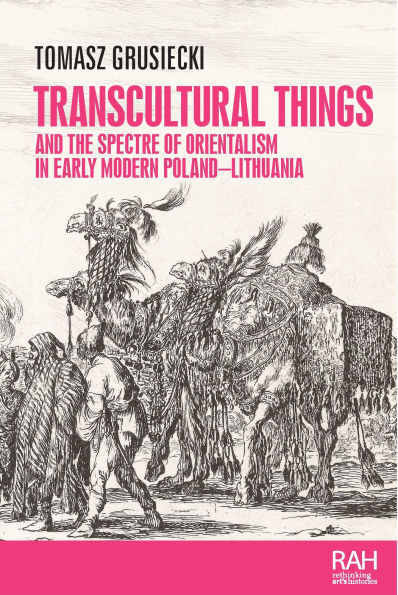Transcultural things examines four sets of artefacts from the Polish-Lithuanian Commonwealth: maps pointing to Poland–Lithuania’s roots in the supposedly ‘Oriental’ land of Sarmatia, portrayals of fashions that purport to trace Polish culture back to a distant and revered past, Ottomanesque costumes worn by Polish ambassadors and carpets labelled as Polish despite their foreign provenance.
These examples of invented tradition borrowed from abroad played a significant role in narrating and visualising the cultural landscape of Polish-Lithuanian elites. But while modern scholarship defines these objects as exemplars of national heritage, early modern beholders treated them with more flexibility, seeing no contradiction in framing material things as local cultural forms while simultaneously acknowledging their foreign derivation.
The book reveals how artefacts began to signify as vernacular idioms in the first place, often through obscuring their non-local origin and tainting subsequent discussions of the imagined purity of national culture as a result.
1143651594
These examples of invented tradition borrowed from abroad played a significant role in narrating and visualising the cultural landscape of Polish-Lithuanian elites. But while modern scholarship defines these objects as exemplars of national heritage, early modern beholders treated them with more flexibility, seeing no contradiction in framing material things as local cultural forms while simultaneously acknowledging their foreign derivation.
The book reveals how artefacts began to signify as vernacular idioms in the first place, often through obscuring their non-local origin and tainting subsequent discussions of the imagined purity of national culture as a result.
Transcultural things and the spectre of Orientalism in early modern Poland-Lithuania
Transcultural things examines four sets of artefacts from the Polish-Lithuanian Commonwealth: maps pointing to Poland–Lithuania’s roots in the supposedly ‘Oriental’ land of Sarmatia, portrayals of fashions that purport to trace Polish culture back to a distant and revered past, Ottomanesque costumes worn by Polish ambassadors and carpets labelled as Polish despite their foreign provenance.
These examples of invented tradition borrowed from abroad played a significant role in narrating and visualising the cultural landscape of Polish-Lithuanian elites. But while modern scholarship defines these objects as exemplars of national heritage, early modern beholders treated them with more flexibility, seeing no contradiction in framing material things as local cultural forms while simultaneously acknowledging their foreign derivation.
The book reveals how artefacts began to signify as vernacular idioms in the first place, often through obscuring their non-local origin and tainting subsequent discussions of the imagined purity of national culture as a result.
These examples of invented tradition borrowed from abroad played a significant role in narrating and visualising the cultural landscape of Polish-Lithuanian elites. But while modern scholarship defines these objects as exemplars of national heritage, early modern beholders treated them with more flexibility, seeing no contradiction in framing material things as local cultural forms while simultaneously acknowledging their foreign derivation.
The book reveals how artefacts began to signify as vernacular idioms in the first place, often through obscuring their non-local origin and tainting subsequent discussions of the imagined purity of national culture as a result.
36.95
Pre Order
5
1

Transcultural things and the spectre of Orientalism in early modern Poland-Lithuania
264
Transcultural things and the spectre of Orientalism in early modern Poland-Lithuania
264
36.95
Pre Order

Product Details
| ISBN-13: | 9781526194725 |
|---|---|
| Publisher: | Manchester University Press |
| Publication date: | 01/20/2026 |
| Series: | Rethinking Art's Histories |
| Pages: | 264 |
| Product dimensions: | 6.14(w) x 9.21(h) x (d) |
About the Author
From the B&N Reads Blog
